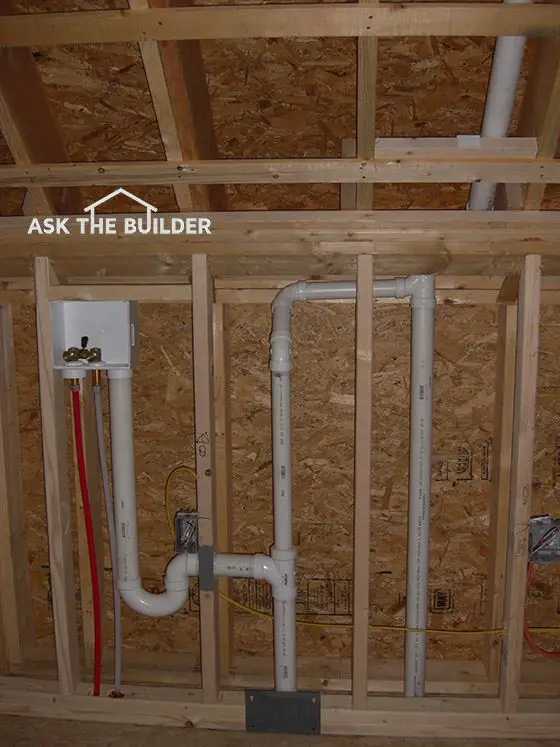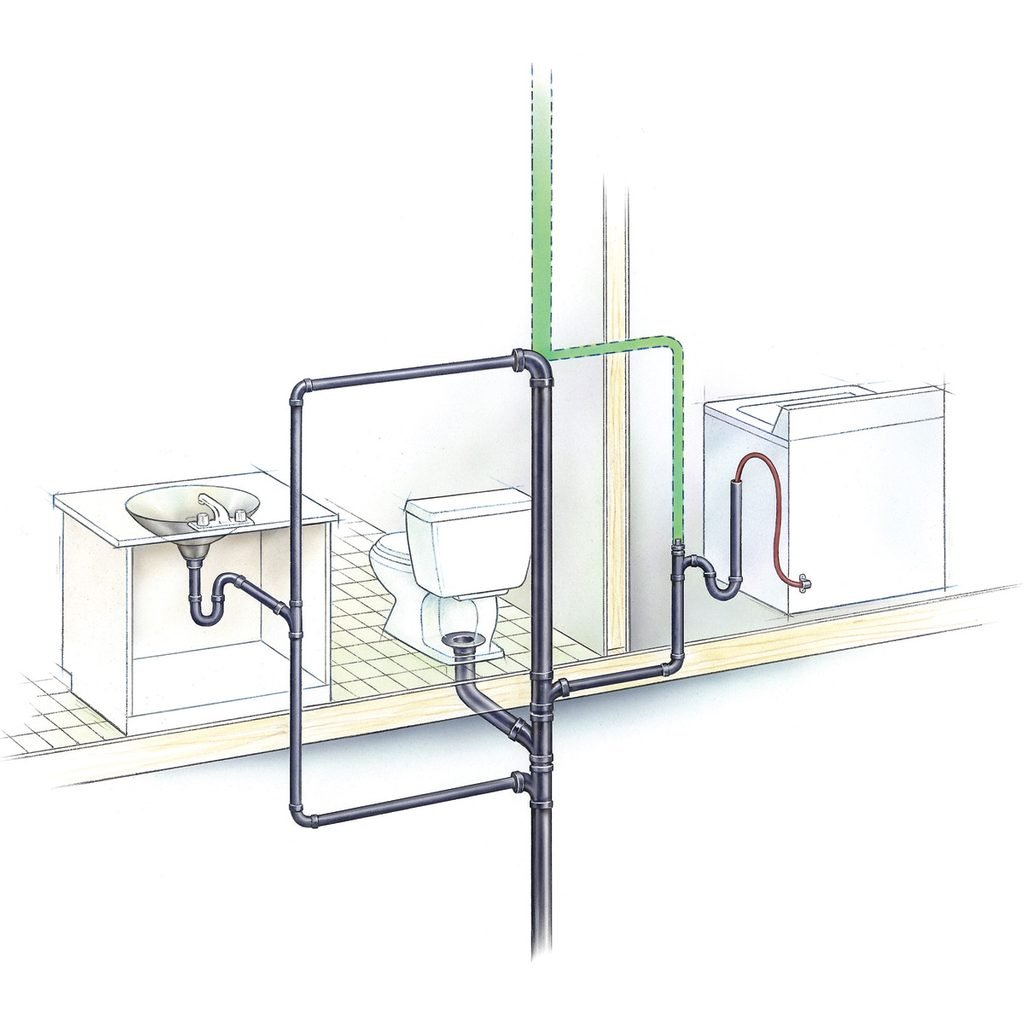Achieving Adequate Ventilation in Your Plumbing System: Why
Achieving Adequate Ventilation in Your Plumbing System: Why
Blog Article
This great article following next in relation to What Are Plumbing Vents and Why Are They Important? is rather remarkable. Don't overlook it.

Appropriate air flow in pipes systems is usually neglected, yet it is crucial for maintaining the performance and safety of your home's pipes. Ventilation aids regulate air pressure, prevent the buildup of hazardous gases, and ensure the reliable removal of waste. In this guide, we will discover the significance of proper plumbing air flow, how it functions, and the advantages it offers your pipes system.
How Ventilation Works in Pipes Systems
Air Pressure Policy
Appropriate ventilation preserves well balanced air pressure within the plumbing system. When water streams with pipelines, it displaces air. Without sufficient ventilation, this displacement can develop unfavorable stress, bring about slow drains or siphoning of water from traps, which can cause undesirable odors to seep into the home.
Preventing Drain Gas Accumulation
Among the most critical features of pipes vents is to avoid sewage system gases, such as methane and hydrogen sulfide, from collecting within the home. These gases can position severe health risks and are highly flammable. Vent pipelines permit these gases to escape safely outside.
Assisting in Waste Elimination
Ventilation aids in the reliable elimination of wastewater by stopping airlocks in the drain system. When air can flow freely via the vents, it enables water and waste to move smoothly through the pipes, reducing the danger of blockages and backups.
Benefits of Appropriate Ventilation
Enhanced System Effectiveness
Effectively ventilated pipes systems operate much more efficiently, with less obstructions, faster draining, and much less pressure on the pipelines. This performance expands the lifespan of the pipes system.
Improved Air High Quality
By avoiding sewage system gases from entering your home, appropriate ventilation adds to far better indoor air high quality, making your living setting healthier and much more comfortable.
Stopping Water Damages
Sufficient ventilation helps stop water from being siphoned out of traps, which can result in drain gases entering the home and triggering water damage gradually.
Actions to Ensure Proper Air Flow
Consulting Plumbing Codes
Always consult regional pipes codes when making or modifying your plumbing system. These codes give the needed standards for correct venting and guarantee your system fulfills safety and security standards.
Normal Examination and Upkeep
Routine examinations can help determine possible ventilation issues prior to they come to be significant troubles. Maintenance tasks, such as cleansing vent pipelines and checking for blockages, are necessary for maintaining the system in good working order.
Specialist Setup
For new installments or major alterations, it's smart to employ a professional plumbing professional. They have the knowledge to make certain the ventilation system is properly made and set up according to code.
Recognizing Ventilation in Plumbing
Air flow in plumbing refers to the network of pipelines that permit air to move through the drainage system. These vents serve numerous purposes, consisting of managing air pressure within the pipelines, avoiding sewer gases from getting in the home, and assisting in the smooth circulation of wastewater.
Kinds Of Pipes Vents
Key Heap Vent
The primary pile air vent, likewise called the vent pile, is the main air vent in a plumbing system. It expands from the primary drainpipe line up through the roofing, enabling gases to escape and fresh air to go into the system.
Branch Vent
Branch vents connect to the main stack air vent and serve individual fixtures, such as sinks, commodes, and showers. These vents guarantee that each component has sufficient air flow to operate appropriately.
Air Admittance Valve (AAV).
An Air Admittance Shutoff (AAV) is a one-way shutoff that enables air to enter the plumbing system without the demand for a traditional air vent pipeline expanding via the roofing system. AAVs are generally used in remodellings or locations where installing a typical vent is unwise.
Signs of Poor Ventilation in Pipes.
Slow Draining Fixtures.
If your sinks, bathtubs, or bathrooms are draining slowly, maybe an indication of poor air flow. Inadequate air flow can create a vacuum result, making it difficult for water to drain appropriately.
Gurgling Appears.
Gurgling sounds originating from drains are usually a result of air being drawn with water traps because of adverse stress in the pipes. This is a clear sign of insufficient air flow.
Undesirable Odors.
Sewer smells inside your home are a warning that your plumbing system is not effectively ventilated. This could suggest that sewer gases are not being adequately aired vent outside, leading to possibly hazardous conditions.
Typical Air Flow Mistakes.
Poor Vent Sizing.
Utilizing small air vent pipes can bring about inadequate air flow and pressure imbalances in the system. It's vital to use vents that satisfy the specific requirements of your plumbing system.
Improper Vent Placement.
Placing vents also much from the components they serve can decrease their effectiveness. Appropriate placement ensures that air can stream freely and successfully via the system.
Disregarding Code Demands.
Building ordinance give particular guidelines for plumbing ventilation. Disregarding these codes can cause a system that stops working to function properly and may lead to expensive repairs or health hazards.
Conclusion.
Appropriate ventilation is an important part of any pipes system, making certain that it functions successfully and safely. By recognizing the significance of ventilation, acknowledging the indicators of inadequate air flow, and taking steps to keep your system, you can protect against costly problems and shield your home's air quality.
4 Things You Should Know About Your Plumbing Vents
What Plumbing Vents Are
Also called a vent stack, a plumbing vent is a vertical pipe attached to your drain line that runs through your roof. The plumbing vent pipe, or plumbing air vent, removes gas and odors from your plumbing system and allows fresh air to enter the pipes, helping the water to flow out of the drain pipes.
What Plumbing Vents Do
Plumbing vents have two basic functions. One of which is to allow unpleasant smelling wastewater and sewer gasses to escape your plumbing system instead of entering your home. Plumbing vent pipes are typically located on roofs, away from windows, to ensure the fumes exit the home completely.
The other function of the plumbing vent is to move fresh air into your plumbing system. This helps move water through every plumbing fixture in your house, like toilets and sink drains. Think of the way in which you need to let a little air into the bottle as you pour soda in order to make the drink flow smoothly.
Different Types of Plumbing Vents
True vent: This is the most common vent option. In simplest terms, a true vent is a vertical pipe attached to your drain line that exits through the roof. They often function as the main vent that other fixtures can connect to. Re-vent pipe or auxiliary vent: Attached to the drain line near specific plumbing fixtures, re-vent pipes run up and over to connect to the main vent. Common vent: Two plumbing fixtures installed on opposite sides of a wall are typically tied into the vent stack using something known as a sanitary cross. Wet vent: This venting option operates as a drain pipe and a vent at the same time. Wet vent drainage systems drain water from one fixture while venting the air from another. Although they’ve been used for over 100 years, wet vent systems have only recently been added to the plumbing code in many areas. If you’re planning on installing one in a bathroom remodel, make sure you check your local code prior to construction. Loop vent: For free-standing fixtures like kitchen island sinks, loop vents are ideal. These vent pipes run under the floor, rise from the P-trap, and create a loop inside the cabinet sink. Air admittance valve: An AAV is a one-way mechanical valve typically installed at the site of the plumbing fixture. AAVs allow venting to occur without having to tie into a larger venting system. They’re ideal for venting fixtures where you aren’t able to easily connect to an existing vent system. Common Plumbing Vent Issues
Although vent pipes typically don’t have water flowing through them, they’re still subject to many typical plumbing issues. For example, clogs are one of the most common problems associated with sewer vent pipes. If your vent pipe gets clogged, all of your plumbing fixtures tied into the vent stack will be affected.
A sink with a slow drain that bubbles and gurgles or a strong sewage smell around your toilet are both indicators that your toilet vent pipe is clogged. Because most vent pipes exit through the roof, old leaves, twigs or even a bird’s nest could be clogging the pipe.
Clogs in your vent pipe system cause a buildup of negative pressure, meaning that water won’t be able to flow out of your home very well. It’s similar to putting your finger over the opening of a straw to trap water inside. When you remove your finger, the water is able to flow out of the straw.
If you suspect you have any blockage in your vent, make sure you have a professional come examine the situation. Left unchecked, a blocked air vent can lead to other costly repairs, like leaks and sediment buildup.
Under Pressure
Pipe vents are essential aspects of a home’s plumbing system. Owning a home means learning about all sorts of things you never put much thought into before. But by understanding as much as you can about the important systems of your home, you can keep those budgets intact and those anxiety levels low.
https://www.homeserve.com/en-us/blog/home-improvement/plumbing-vents/

Do you appreciate reading about What Is a Plumbing Vent and Why Is It Important? Give a remark down the page. We would be happy to listen to your reactions about this page. Hoping that you visit us again later on. Sharing is caring. Helping others is fun. We recognize the value of reading our article about Essential Plumbing Vent Pipes: Understanding Their Role.
About This Report this page